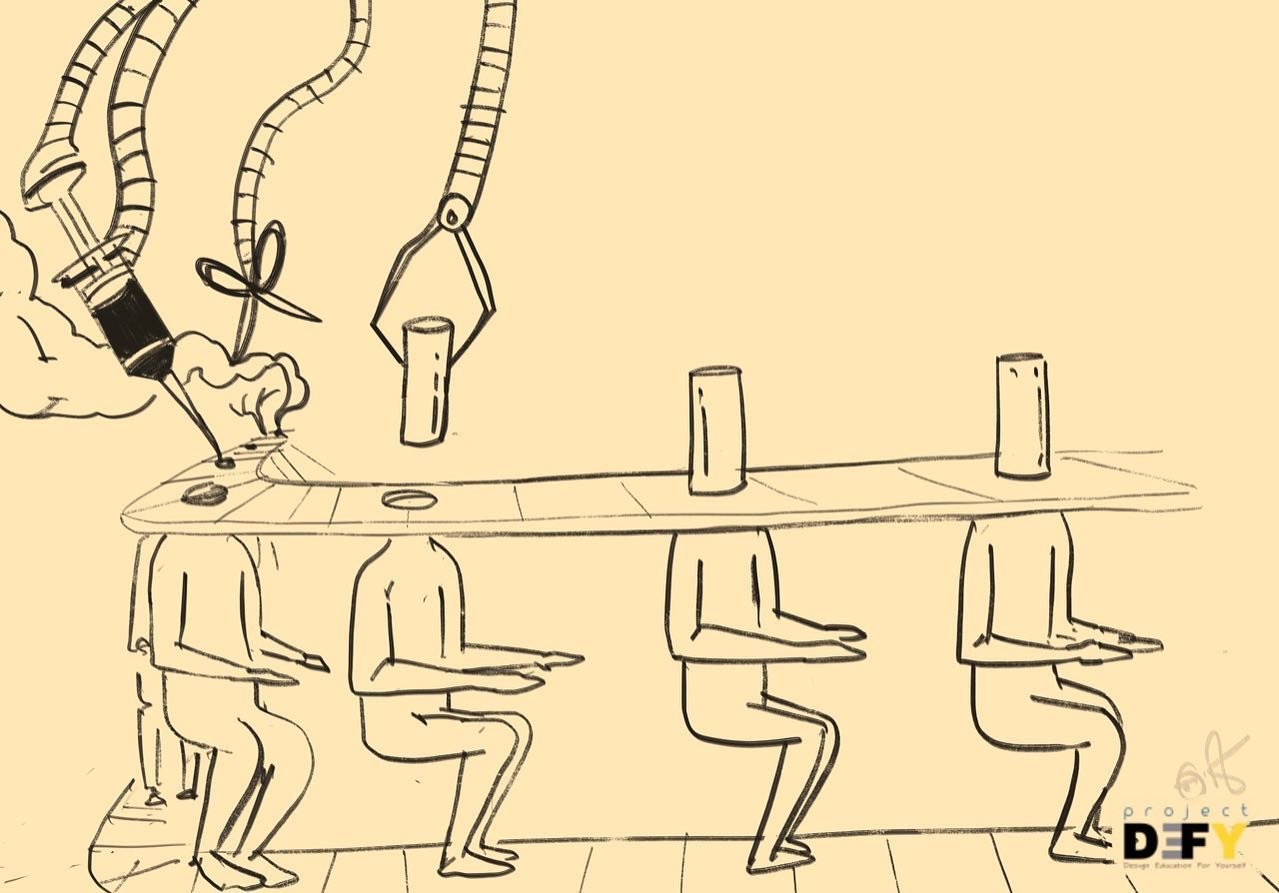
If you design a system with certain features to do certain things, don’t be surprised if it does it.
Ken Robinson
Large-scale public education did not exist before the 19th century, and it only came into existence with the purpose of supplying human labor for the industries that were coming up. Hence it is based on the principles of industrialism and conformity. So, are the rosters, ringing of the bells and uniforms, glaringly similar to a factory setup. Over the years with the exploding population and growing demand, the education system started inflating, so the governments all around strangled the same systems with standardized testing, which increased the competition and added a layer of horse blinders on both the teachers and the students, just to churn out the best results out of a misleading system.
Today we demand creativity and innovation in every aspect of our modern world, and these expectations have been backtracked and reached the schooling system. Today schools are expected to nurture creativity among children and lectures on innovation are given in every business management school. Well, in defense of schools these expectations are just unfair. Schools aren’t designed to nurture creativity, it was designed with the exact opposite values of compulsion, competition, monoculturization, and decontextualization of humans from their own environment.
Creativity in simple words can be defined as having new ideas of value. And when one acts upon these ideas to create something, we call it innovation. Creativity and innovation, like any other skill comes with practice, it’s a habit that one builds over the years to look at things differently, to think more often of different possibilities, by gaining knowledge from interdisciplinary fields, and by trying to build these different ideas into reality.
Schools not only do not nurture these skill sets, but restrict every strand of these muscles to grow within individuals by not giving them the space to think differently. Every student is supposed to study the exact same syllabus whether they like it or not, with the parents and teachers holding a hierarchy of subjects, where mathematics & sciences are on top, followed by languages & social studies and at the end comes humanities. On top of that, Individuals in schools are not allowed to make mistakes, as the one making mistakes is punished, shamed or asked to buckle up and perform in the manner that is expected by the education system.
In my personal experience of being and working with children, I have seen that children are already creative by themselves, they are not afraid to try out new things, they carry their own worldviews, and are wanting to create things that they would like to see for themselves. As Picasso once said – “Every child is an artist, the problem is how to remain an artist once we grow up.” Schools play a fair share in causing this problem by restricting every individual from carving out a life for themselves as they might want to and by adding the weight of shame and fear which people carry all their lives. Well, sometimes the solution to the problem is not causing it and trying something different.
About the author
Muzamil approaches life with zest and with an innate need to explore different ideas. His beloved subject is himself and the people around him. Driven by freedom of choice he is working with Project DEFY, as a creator of self-designed learning spaces in different communities locally & internationally.
